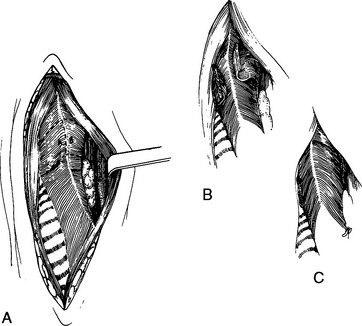Chapter 66 Surgery of the Esophagus
In general, the signs of esophageal disease are related to loss of function, to obstruction, or to inflammation of the esophagus and the surrounding structures. Surgery on the esophagus probably requires more skill and precision than any other portion of the alimentary tract. The esophagus is constantly moving, lacks a serosal layer, and does not have omentum to help seal small leaks. If suture line reinforcement is necessary, adjacent muscle, diaphragmatic tissue, or pericardium may be used. Extra-abdominal movement of omentum on a pedicle through a rent in the diaphragm can also be used for this purpose.
ANATOMY
Upper Esophageal Sphincter
Lower Esophageal Sphincter
CRICOPHARYNGEAL ACHALASIA
Preoperative Considerations
As described in Chapter 4, perform barium swallow fluoroscopy preoperatively to distinguish cricopharyngeal achalasia from other forms of oropharyngeal dysphagia and to evaluate motility of the body of the esophagus. Evaluate for aspiration pneumonia and treat accordingly.




